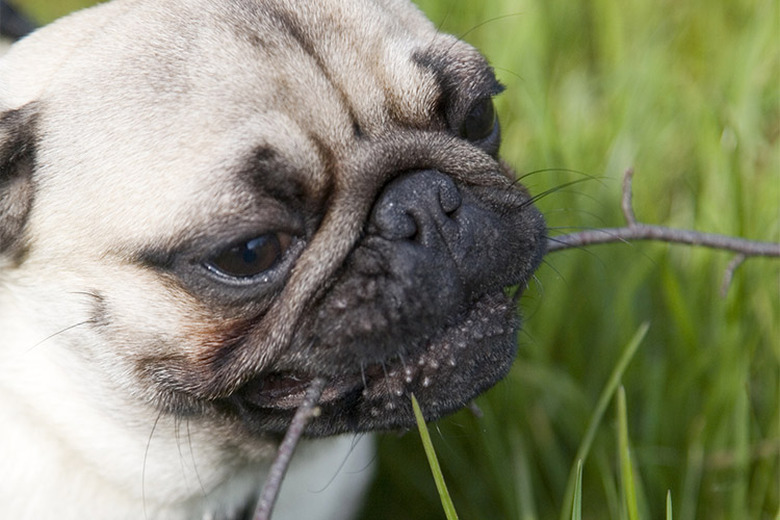My Dog Keeps Eating Twigs
Put together dogs' innate curiosity about the things in their environment and their natural urge to chew, and you may find dogs eating twigs, branches, bark, leaves, and anything else they find. If their environment has lots of branches and twigs on the ground, dogs are more likely to chew on them, especially if they don't have much else to do. It's not good for dogs to chew on or eat twigs of any size, though, as they can be harmful for many reasons.
Many trees and bushes are toxic to dogs
Many trees and bushes are toxic to dogs
Trees and bushes that are poisonous to dogs can cause reactions ranging from mild to severe, including burning their mouth, vomiting, diarrhea, muscular and neurological reactions, and some can even be fatal. It's important to identify what is growing (and dropping wood) in your dog's environment and find out if it is toxic to dogs.
Common trees that are toxic to dogs include fruit trees like apple, apricot, plum, peach, and cherry; nut and nutlike trees, including black walnut, macadamia, and buckeye; and sago and other palms. Examples of toxic shrubs are common yard species, like azalea and rhododendron; shrubs popular for hedges, like boxwood and yews; and English, American, European, and other kinds of holly.
A dog eating twigs may harm the teeth and gums
A dog eating twigs may harm the teeth and gums
Verified cases have occurred where pieces of sticks or twigs have gotten stuck in the mouth, lacerating the gums or throat. Little pieces have gotten stuck between their teeth, rotting the teeth and requiring extraction. Larger sticks can impale dogs at the back of the throat or anywhere on the body, and if the sticks fall out, you may not know where your dog was injured or why he is acting strange and whining as if in pain.
Twigs get stuck in the digestive system
Twigs get stuck in the digestive system
Splinters of wood can puncture the stomach and intestines. Larger pieces of sticks can even get stuck in the intestines, causing blockages that require surgery. Although sticks and twigs satisfy a dog's urge to chew, they provide no nutritional value and put dogs at great risk of injury, illness, serious consequences, and even death. Clearly, a dog eating twigs is a bad idea.
Introduce alternative activities
Introduce alternative activities
Most dogs chew twigs and sticks because they are bored, the wood pieces are there, and they satisfy the urge to chew. Start by cleaning up twigs, sticks, and other things dogs shouldn't eat from your yard. Remove bushes and trees that are toxic to dogs or at the very least, put fences around them. Be sure fences are out far enough from the tree or bush so any wood that falls will stay within the fencing.
Find other activities to keep dogs busy so they don't resort to chewing wood. Taking them on an extra daily walk can tire dogs out enough that they will rest rather than chew. Most dogs need at least 60 minutes of exercise per day. Give them approved chew toys or mentally stimulating puzzles specially designed for dogs to use their creativity and chewing expertise to solve it or get to the treat enclosed within it.
Chewing caused by illness is rare
Chewing caused by illness is rare
When pets eat inedible items, like twigs, sticks, rocks, plastic, or whatever, it is called pica. Sometimes, although rarely, pica is caused by an illness or metabolic issue. If you have tried ridding your dog's environment of sticks and twigs and tried providing other activities, like extra walks and chew toys, but your dog is still chewing wood or other unapproved inedible items, contact your vet for help. Even if tests come back negative for issues that could cause pica, your vet will have more ideas for how to stop your dog from eating twigs and other harmful materials.
